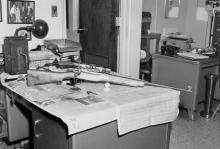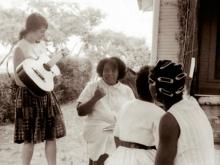freedom summer

IN JUNE 1964, 54 years ago this month, James Chaney, Andrew Goodman, and Michael “Mickey” Schwerner were asked by leaders of the Congress of Racial Equality to investigate the burning of a black church that had doubled as a Freedom School in Neshoba County, Miss.
More than 1,000 people, including college students, boarded buses bound for Mississippi that year. Over the preceding four years, these young people had witnessed a Southern sea change, from school desegregation to the integration of lunch counters, buses, bus depots, and movie theaters. They witnessed the Children’s March in Birmingham—hoses, dogs, terror faced down by black children who did not run. They stood their ground and they filled jails and they sang about overcoming. These previously silenced and subjugated people were now using the only thing they had—their bodies—to break through. And they had broken through.
Nashville, Greenville, Mont-gomery, Birmingham ... Now, it was Mississippi’s turn. James Meredith had served as the tip of the spear in 1962 when he registered for courses at Ole Miss. Mississippians lost their minds. The ensuing riot required 31,000 National Guards to quell it and left two dead and hundreds wounded. Meredith did register—and was graduated—but Medgar Evers, field secretary of the NAACP in Mississippi, was assassinated the following year, in his driveway.

On June 2, 1964, while hundreds of Freedom Summer volunteers were still finishing their training in Oxford, Ohio, three civil rights workers went missing in Neshoba County, Miss.
Moses knew from his experience in Mississippi that James Chaney, Michael Schwerner, and Andrew Goodman, who had left the day before to investigate a church burning in Philadelphia, Miss., would never be found alive. Moses’ responsibility that evening was to tell the young recruits who planned to spend their summer registering voters in Mississippi that they could meet the same end.
What happened next surprised some. In small circles, the young volunteers sat and talked. Soon, they started singing.
![By Federal Bureau of Investigation Workers (Federal Bureau of Investigation) [Public domain], via Wikimedia Commons](https://sojo.net/files/styles/medium/public/blog/Mississippi_KKK_Conspiracy_Murders_June_21_1964_Victims_Chaney_Goodman_Schwerner.jpg)
Saturday marked the 50th anniversary of the senseless slaughter and lynching of civil rights workers James Chaney, Andrew Goodman, and Michael Schwerner during Freedom Summer in Mississippi. They gave their lives to insure that every person in Mississippi would have the right to vote and be a full citizen of this nation. This interracial trio believed with all their hearts that it was worth it to put their bodies on the line for racial justice and dignity, and they paid the ultimate price.
We have come a long way in the last 50 years, but the recent deaths of Trayvon Martin and Jordan Davis in Florida remind us that much work remains, and that white supremacy may have taken different forms, but it is alive and well. And today, white supremacy operates most powerfully at the subconscious level. And it has to do with an innate feeling of superiority.
On Feb. 1, 1960, four African-American students sat down at the "whites-only" lunch counter at the F.W. Woolworth store in Greensboro, North Carolina. As I child, I was told by my late father that he took his youth group to participate in these sit-ins.